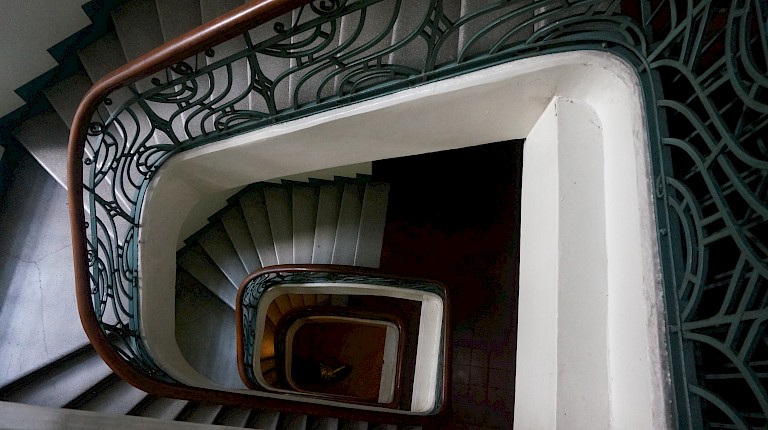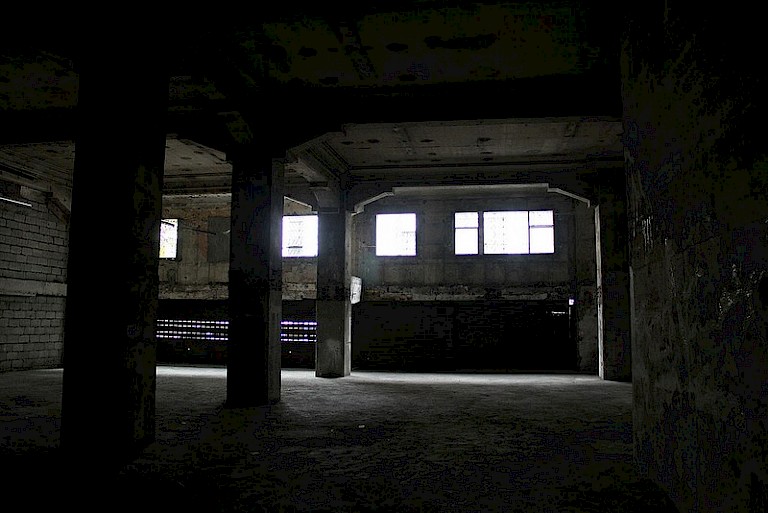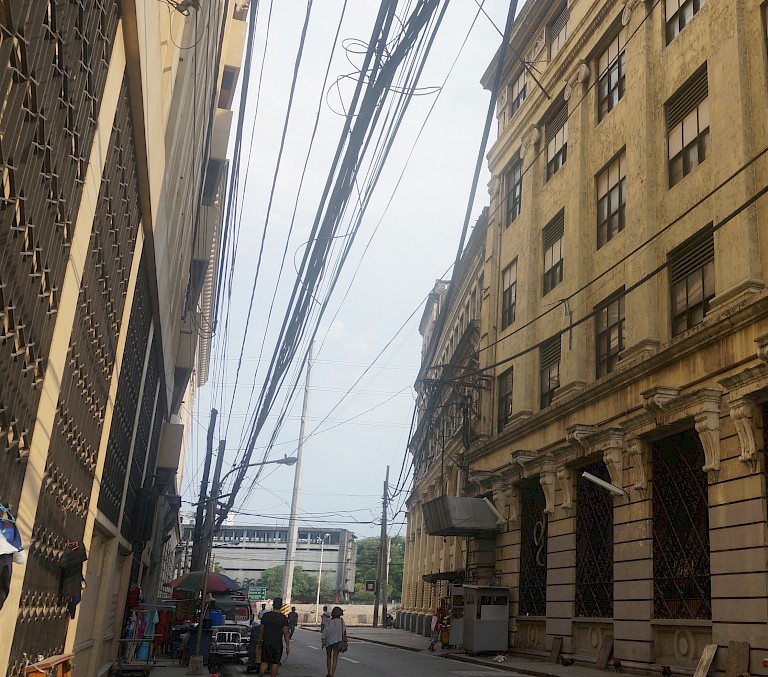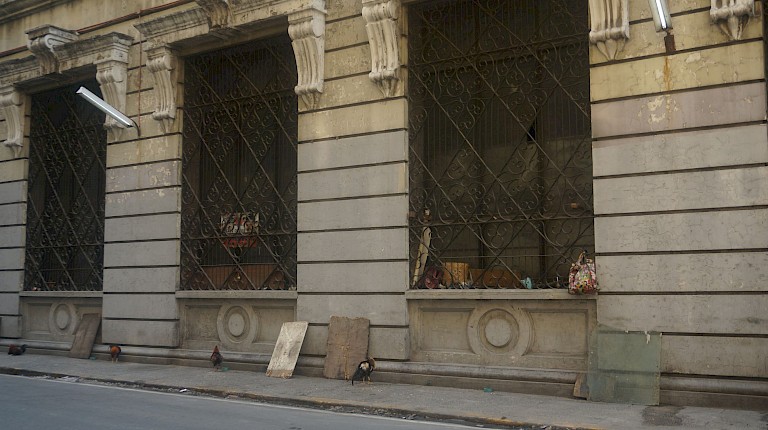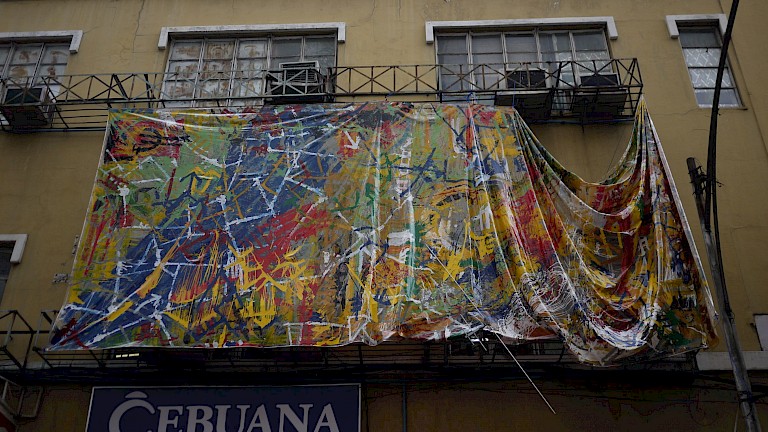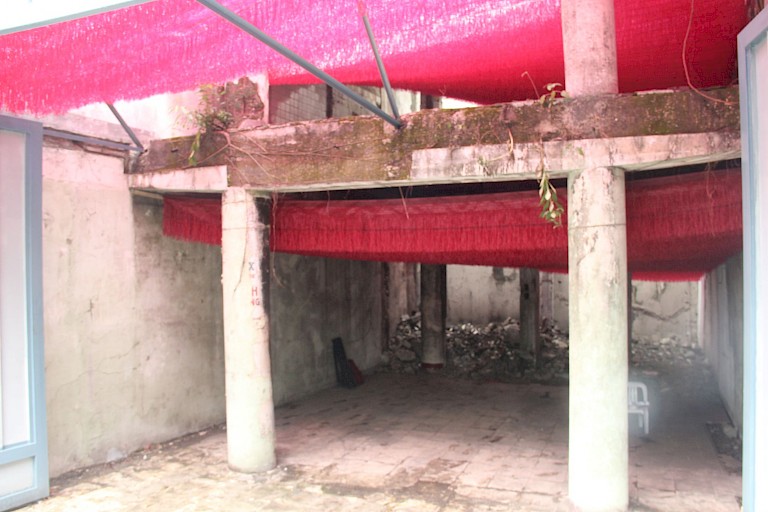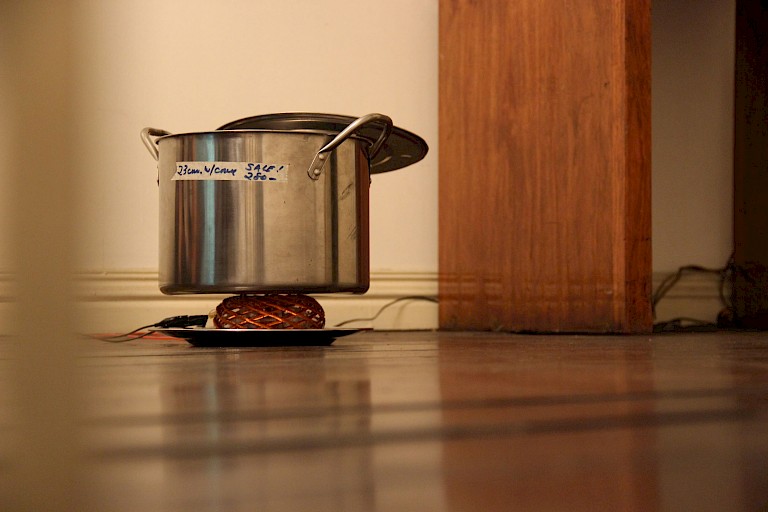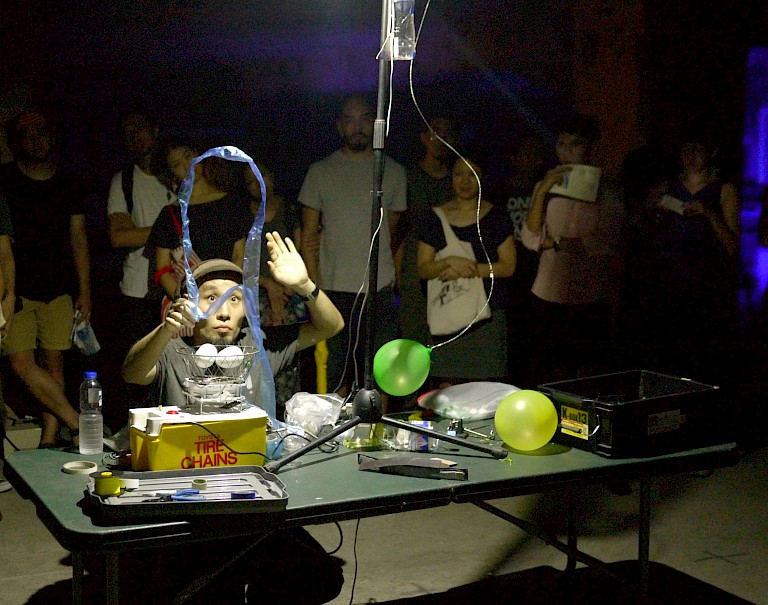



ARTIST: Chang Yung-Ta (Taipei); Huang Po-Chih (Taipei); Urich Lau (Singapore); Tang Kwok-Hin (HongKong); Fiona Lee (HongKong); Wit Pimkanchanpong (Bangkok); Lim Kok Yoong (Malaysia); Kanta Horio (Tokyo); Umeda Tetsuya (Osaka); Mark Salvatus (Manila); Renan Ortiz (Manila); Ian Carlo Juacian (Manila); Ernest Conception (Manila) with Guest artists Johanna Poethig/Chris Brown (USA)
ARTWORK/YEAR: Transi(en)t Manila (2012)
REGION: Oceania
RESEARCHER: Yang Yeung
The themes of the project are art, technology, heritage and people. Artists are invited to engage with heritage buildings in Escolta, Manila, by means of technology that are recognizable by the audience, to make works that are “culturally relatable” to them. The project also explicitly seeks to be “aesthetically inclusive”, that is, for the varying competencies in art of the audience be taken into consideration. These could be regarded as the selection criteria for art works. The distribution of the artworks in the sites is as follows: Juan Luna Building with Kok Young Kim & Tetsuya Umeda; Polland Nopia Cafe with project inform centre; The Runs, with Wit Pimkanchanapong; The Toeff Centre with Renan Ortiz and Po Chih Huang; First United Building with Mark Salvatus, Yung Ta Chang, Horio Kanta, Chris Brown and Johanna Poethig; Regina Building with Urich Lau, Calvo Building with Ian Carl Jaucian and Fiona Lee, and Pan with Kwok Hin Tang.
As a project, there could be two ways of reading Trans(ien)t Manila: first, a self-sufficient stand-alone project which included a 2-week artist residency for 14 artists, the overwhelming majority of them from Asia including the Philippines, Japan, Hong Kong, Singapore, Taiwan, Malaysia and Thailand. The project was officially launched in April 2014, with satellite programs in Taipei in March and Penang in August. It closed in November 2014. In Manila, the residency coincided with the launches of some select artist’s work, public talks on artists’ experiences, and a curator-led walk in an under-privileged neighborhood Escolta in metro Manila, with some artists present. The second reading could be that this is a project extending from Project Glocal, which Curator Dayang Yraola founded. In a way, as a series of residencies that move artists from their home cities to neighboring ones, Transi(en)t Manila could be regarded as a resolution to the questions Project Glocal asked – where is the global and local, a question that remained alive in many parts of Asia, including the speed of change in the use of everyday technology in artistic practices. In this project as extension, the idea of transit as transient but also solid, is highlighted – the artists constitute a moving population in a stronger sense, a global, regional and local experience relying on paths new and old, and path-finders getting lost and being found. The project was supported by multiple parties in cash and kind. They include, in addition to the co-presenters Project Glocal and 98B COLLABoratory, the Japan Foundation, Bamboo Curtain (Taipei), National Arts Council (Singapore), Viva Manila, BMLab, Click SonicLab, Bahay Tsinoy, Old Manila Walks, Boysen and Jumbo Plastic Linoleum. Partnerships include Escolta Commercial Association, Inc., Old Manila Walks, Polland Cafe, College of St. Benilde's School of Design and Arts.
There are multiple levels of excellence in this project. First, in terms of place-making, it presents a strong curatorial focus and goal – to employ dynamic and multiple art forms to open up abandoned and less accessible place with cultural significance for people with varying competencies in appreciating and understanding contemporary art. Heritage is addressed but not regarded as valuable for teaching history only, but as that allows for the imagination of the future. In so doing, the project forges a relation between artistic and cultural expressions in public space. Second, in terms of agency of cultural production, the project highlights the idea of ‘city-zens’ in the context of a relatively poor neighborhood of metro Manila to bring attention and care to what seems of be left out of economic development. In doing so, it acknowledges the cultural and social diversity within a city and values the equal participation of all in constituting life in a particular city.
The idea of the project title further extends the imagination of who inhabits and makes a city – those in transit often include locals moving across various parts of urban space, as well as artists and others moving across streets, districts, cities, cultures, nations, etc. Albeit in the passing, and their influences at times regarded as ‘transient’ rather than permanent, they, too, constitute ways of life in cities. They, too, contribute to keeping heritage alive and making its value endure. In recognizing the agency of mobility, the project obliquely and quietly resists globalizing forces that could be homogenizing. It carves a space between grand and ill-defined narratives of global citizenship and excessive parochialism seeking to articulate the local as an essentialist kind of nativism for art and culture on the ground to be accessible.
Third, while the project could risk becoming a force of gentrification, as other cities in the world have experienced, the presenters have taken meticulous care in choosing the kind of art work and materials to be employed, conjuring an aesthetics that emphasizes inclusion, participation, social engagement, the affective, and the humanistic. All the works emphasize intimate and close encounter with the body, rather than over-emphasizing, for instance, the sense of sight and the gigantic as in spectacles.
Lastly, considering the partnerships the project depends upon, it is evident that much ardor and will have been put into engaging with various sectors of civil society (eg. the non-profit sector, private sector, trans-local institutions etc.) to be involved in art. It makes art and heritage relevant and a part of life to them, which is a core condition to facilitate sustainability of both. Through the curation of partnerships, the project sets up communities, whose boundaries and lines are perforated, not closed and they keep unfolding and transforming. In all, the project embodies a rhythm that playfully weaves artistic and cultural production together that not only makes meanings for places, but also for communities of people to be connected with the meaning of their citizenship (and city-zenship).
The themes of the project are art, technology, heritage and people. Artists are invited to engage with heritage buildings in Escolta, Manila, by means of technology that are recognizable by the audience, to make works that are “culturally relatable” to them. The project also explicitly seeks to be “aesthetically inclusive”, that is, for the varying competencies in art of the audience be taken into consideration. These could be regarded as the selection criteria for art works. The distribution of the artworks in the sites is as follows: Juan Luna Building with Kok Young Kim & Tetsuya Umeda; Polland Nopia Cafe with project inform centre; The Runs, with Wit Pimkanchanapong; The Toeff Centre with Renan Ortiz and Po Chih Huang; First United Building with Mark Salvatus, Yung Ta Chang, Horio Kanta, Chris Brown and Johanna Poethig; Regina Building with Urich Lau, Calvo Building with Ian Carl Jaucian and Fiona Lee, and Pan with Kwok Hin Tang.
As a project, there could be two ways of reading Trans(ien)t Manila: first, a self-sufficient stand-alone project which included a 2-week artist residency for 14 artists, the overwhelming majority of them from Asia including the Philippines, Japan, Hong Kong, Singapore, Taiwan, Malaysia and Thailand. The project was officially launched in April 2014, with satellite programs in Taipei in March and Penang in August. It closed in November 2014. In Manila, the residency coincided with the launches of some select artist’s work, public talks on artists’ experiences, and a curator-led walk in an under-privileged neighborhood Escolta in metro Manila, with some artists present. The second reading could be that this is a project extending from Project Glocal, which Curator Dayang Yraola founded. In a way, as a series of residencies that move artists from their home cities to neighboring ones, Transi(en)t Manila could be regarded as a resolution to the questions Project Glocal asked – where is the global and local, a question that remained alive in many parts of Asia, including the speed of change in the use of everyday technology in artistic practices. In this project as extension, the idea of transit as transient but also solid, is highlighted – the artists constitute a moving population in a stronger sense, a global, regional and local experience relying on paths new and old, and path-finders getting lost and being found.
The project was supported by multiple parties in cash and kind. They include, in addition to the co-presenters Project Glocal and 98B COLLABoratory, the Japan Foundation, Bamboo Curtain (Taipei), National Arts Council (Singapore), Viva Manila, BMLab, Click SonicLab, Bahay Tsinoy, Old Manila Walks, Boysen and Jumbo Plastic Linoleum. Partnerships include Escolta Commercial Association, Inc., Old Manila Walks, Polland Cafe, College of St. Benilde's School of Design and Arts.
Image Credits: BlissMarket Laboratory
All copyright belongs to Shanghai Academy of Fine Arts, Shanghai University.
